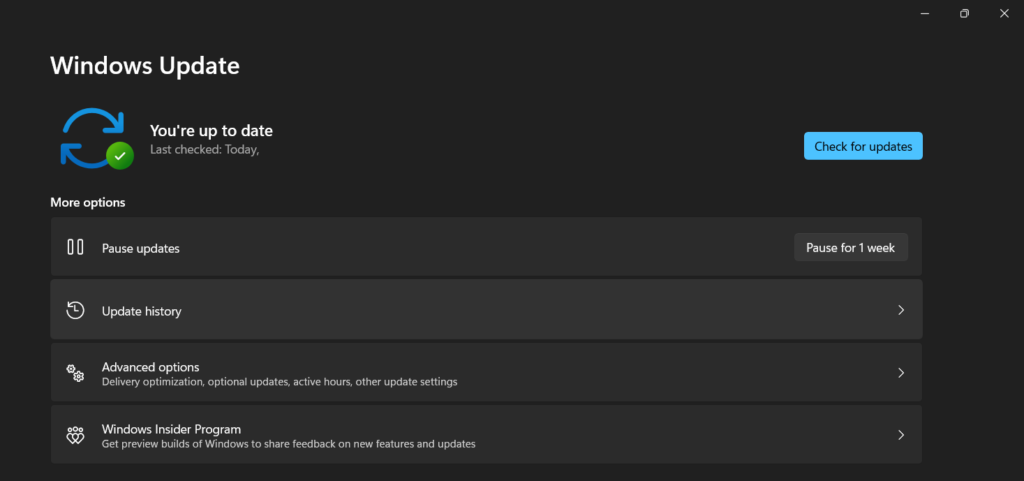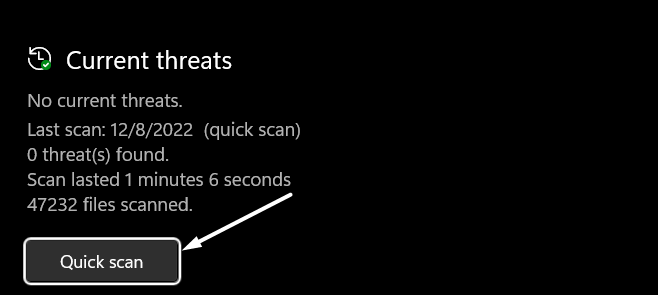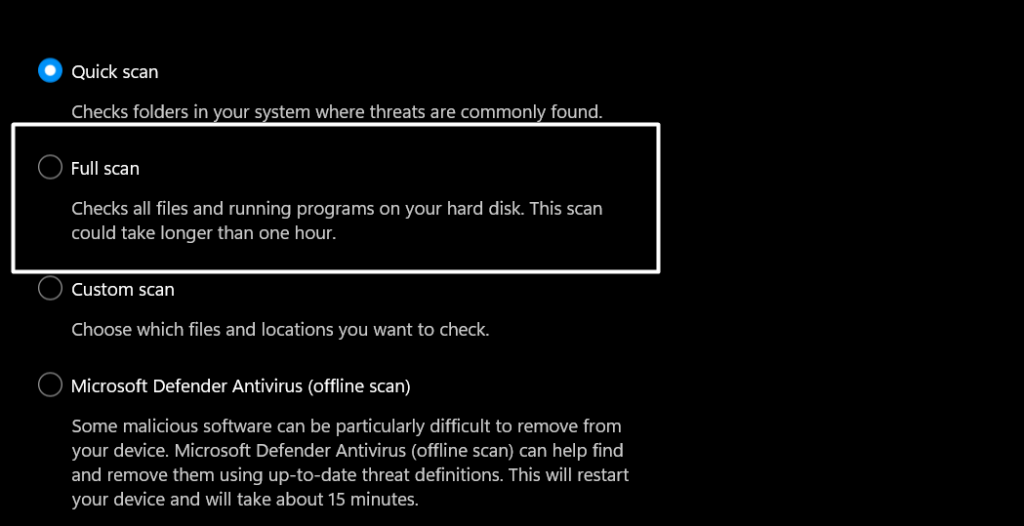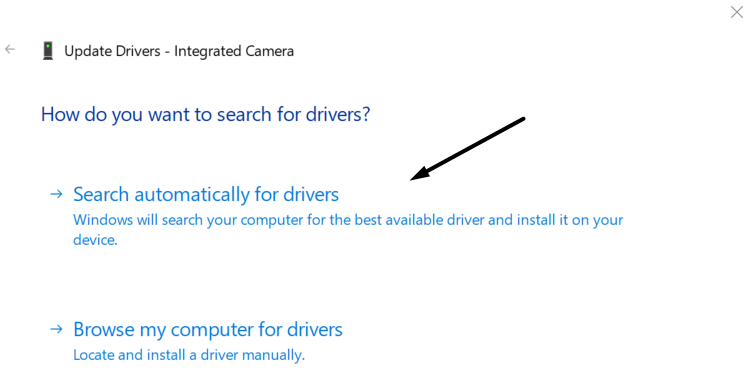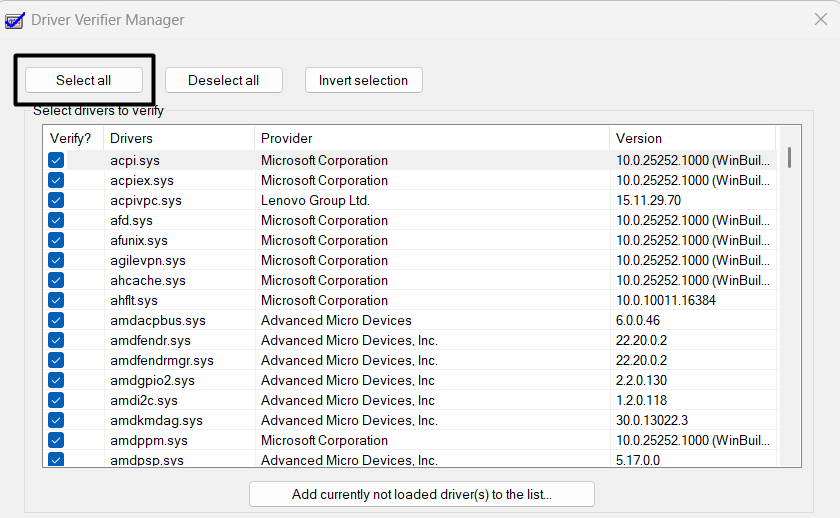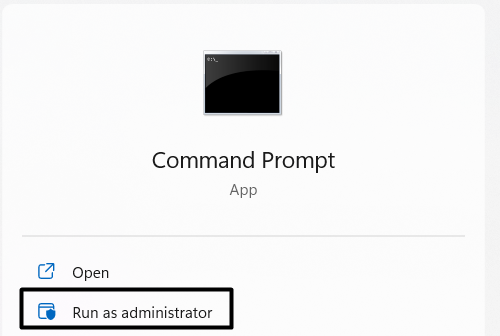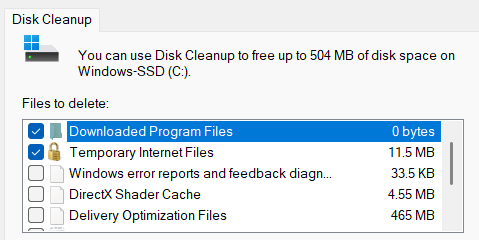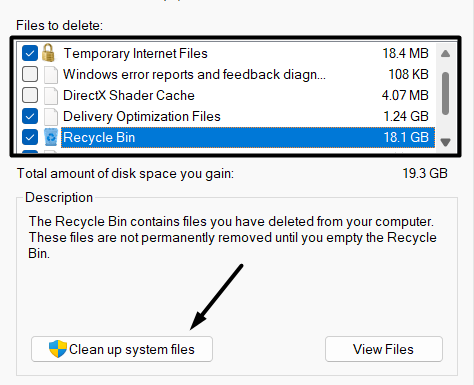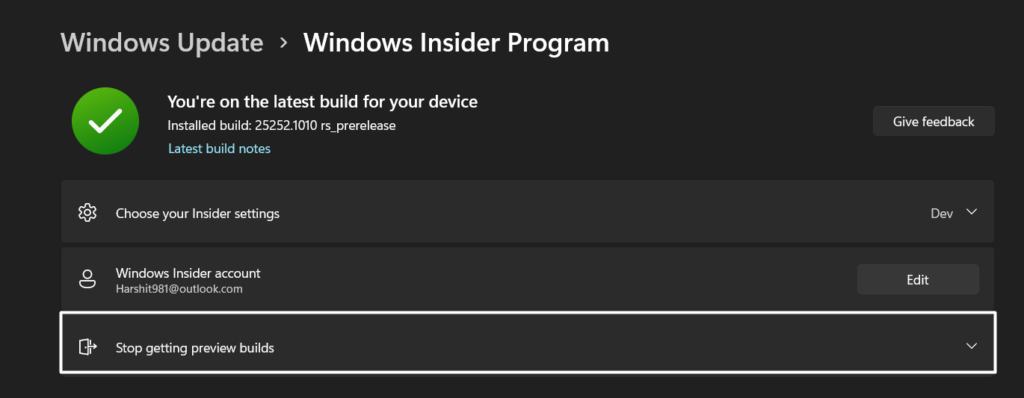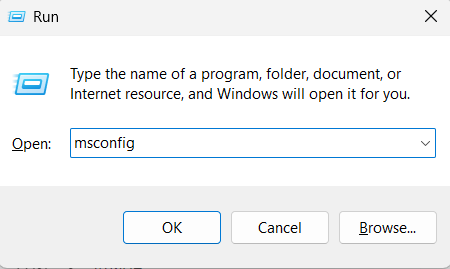Sometimes, these minor issues also lead to big issues, like Green Screen of Death (GSoD). Many users face the Green Screen of Death error while using their PC and wonder whether it’s fixable or not. Fortunately, the GSoD is repairable, and you can fix it. Here in this troubleshooting guide, we’ve mentioned 15 ways to fix the Green Screen of Death error with ease.
What is the Green Screen of Death in Windows 11?
Green Screen of Death (GSoD) is a critical Windows error that occurs when your Windows Build Preview runs into a problem. There could be varied reasons behind this problem. But one of the main causes is hardware malfunctions. When this error occurs, it shows the “Your Windows Insider Build ran into a problem and needs to restart. We’re just collecting some error info, and then we’ll restart for you” error message on a green background.
What Are the Types Of Green Screen of Death Errors?
All users get different stop error codes on the green screen, depending on what the issue is. In this section, we’ve mentioned all the common GSoD error codes. Check them out below.
MANUALLY_INITIATED_CRASH: The error code explains itself that it appears when you manually initiate the GSoD. To get this error, you can create a new key or file in the Windows Registry named CrashOnCtrlScroll.
CRITICAL_PROCESS_DIED: This error occurs when an essential system component fails to run or suddenly stops functioning for an unknown reason.
SYSTEM_SERVICE_EXCEPTION: This GSoD error is a bit complex to understand. It appears when an exception hinders the execution of a process from kernel to user mode.
CLOCK_WATCHDOG_TIMEOUT: The error appears when you have two or more processors, and one of them stops functioning properly. You get the GSoD error with this error stop code as soon as this happens.
PAGE_FAULT_IN_NON_PAGED_AREA: Lastly, this error code usually appears when Windows doesn’t find the matched or required file in the system’s storage to complete the already running process.
What Are The Most Common Causes Of Green Screen of Death Error?
These are some of the most common culprits that can lead to the Green Screen of Death issue.
Corrupted System Files and Disks Problematic Windows Updates Corrupted Graphic Drivers Less System Ram Malware and Threats Damaged USB Peripherals Third-Party Antivirus Program Overclocked CPU
Fix Green Screen of Death Error in Windows 11
Here in this section, we’ve mentioned 15 possible workarounds that can help you fix GSoD. Before moving ahead, we want you to ensure that your Windows 11 PC is already running on the latest build. You can move to Settings > Windows Update to check for the latest updates and install them. Once this is checked, continue and try other troubleshooting methods.
1. Find & Disconnect the Malfunctioning Hardware Connected
One of the most common reasons behind the GSoD error is corrupted external devices connected to the PC. It’s likely that the external devices connected to the PC, like hard drives, keyboards, etc., have some faults, because of which GSoD appeared. To check this, we suggest you to disconnect all external devices one by one and check the status of the issue after removing every device. If the issue disappears after de-attaching a particular external device, we suggest not plugging the same device again into the system to avoid this issue.
2. Scan for Viruses or Malware on the System
We all download files from various sources on our PC and never think that the files could contain malware that can harm the computer. You’ve likely unintentionally installed a malicious program or file on your PC, which made the system’s settings buggy. As a result, it resulted in this error. To check whether the malware is the culprit, you can quickly run a virus scan. You can use the integrated Malware Removal tool to scan and remove all the malicious apps and files from the system. Follow the below-mentioned steps for further assistance:
- Press the Windows key on your keyboard to open the Windows Search Box and type Virus & threat protection.
- Now, select Virus & threat protection from the Best match section to open security-related settings.
- Next, click on Quick scan in the Current threats section and wait for the estimated time mentioned on the screen.
- Once the quick virus scan is completed, click on Scan Options in the Current threats section and select the Full scan option.
- Lastly, click on the Scan now option to check all the files and apps on your hard disk to find infected files.
- Once the full virus scan is completed, reboot the PC and use it for a few minutes (minimum 15 – 20 minutes). If the issue GSoD error still appears, follow the other troubleshooting methods mentioned in this guide.
3. Remove Unwanted Applications
Keeping a lot of apps on the system is fine unless they’re using so many system resources. But keeping programs that can interfere with the system’s components and lead to the Green Screen of Death error isn’t good. In that case, we suggest removing all the apps from the system that you haven’t used or updated for a long time. We’ve mentioned the steps below to uninstall apps from your Windows 11 PC:
- Open the Settings app on your Windows 11 PC and move to the Apps section from the left navigation pane.
- Click on the Installed apps option in the Apps section to view all the apps installed on the computer. Now, look for the program that you haven’t used for a long time and uninstall it from your Windows 11 PC.
- Once the app is found, click on the three dots at the end of the block and select Uninstall from the menu.
- Lastly, select Uninstall once again from the dialog box to uninstall the selected app from your Windows 11 PC.
4. Uninstall Third-Party Antivirus Program
When we download new updates on our PC, it installs a lot of files to the system. But the antivirus tool doesn’t know whether the file is safe or not since it isn’t in their database. Due to this, it marks the files as a potential risk and shows the error. If you’ve any third-party antivirus tool installed on your Windows PC, uninstall it and check the issue’s status.
5. Update Display Drivers
In some cases, it’s found that the system’s outdated display drivers can also lead to the Green Screen of Death issue. It could be possible that your PC’s display drivers aren’t compatible with the new update, which is why you got the error. You need to update your graphic drivers to the latest version to make sure they’re now compatible with the new updates. We suggest following the mentioned methods to update the display/graphic drivers:
- First, open Device Manager on your Windows 11 PC using the Windows + R key combination and type devmgmt.msc.
- Search for Display adapters in Device manager, double-click on it to expand the section, and view all the display drivers installed on the system.
- Now, select a display/graphic driver, right-click on it to open the contextual menu, and then select the Update driver option from the menu.
- Select Search automatically for drivers and let the system search for new driver updates and install them automatically.
- Once all the display/graphic drivers are updated, reboot your Windows 11 PC, and check if the issue is resolved.
6. Run Built-in Driver Verifier
Most versions of Windows come with a built-in driver troubleshooter tool called Driver Verifier. This tool lets you find and fix issues with graphics and kernel-mode drivers in a few easy steps. If updating the display drivers from Device Manager doesn’t fix the issue, consider using the Driver Verifier tool to repair them. Follow the below-mentioned steps to use the Driver Verifier tool:
- Open the Run utility on your Windows PC, type verifier in the Run’s search box, and press the Enter key.
- Once the Driver verifier window is opened, select the Create standard settings option and click the Next button.
- Now, choose the Select driver names from a list option on the Select what driver to verify dialog and click on the Next.
- Next, tap on the Select all option and click on the Finish option to save the recently made changes.
- Once all the settings are saved, close the Driver verifier tab, and then restart your system to check if the issue is resolved.
7. Run SFC, DISM, & CHKDSK Scan To Fix & Repair Corrupted System Files
Some GSoD errors, like PAGE_FAULT_IN_NON_PAGED_AREA arise because of corrupted or missing essential system files. It could be possible that some of your system files are corrupted or missing, which caused this issue. To ensure whether a corrupted or missing system file is the issue, you can try running the SFC, DISM, and CHKDSK scans. Running these scans will fix all the corrupted files and driver errors in a few seconds. We’ve explained the entire process in the below-mentioned steps:
- To start, open Command Prompt on your Windows 11 PC with admin rights using the search utility.
- You have to start the process by running the SFC Scan. Running SFC Scan will search for the corrupted files on the system and replace them with the backed-up version. So, execute the SFC command by entering the mentioned command in the console.
- Once the SFC Scan is completed, execute the CHKDSK command to find and fix all kinds of hard drive errors.
- Once the CHKDSK scanning process is completed, execute the DISM command in the console to scan the operating system and repair all its problems.
- Lastly, restart the PC and check the issue’s status. Suppose the issue appeared because of corrupted system files. It would have been fixed now.
8. Disable Hardware Acceleration on Your System
Many users said that Hardware Acceleration could also lead to this issue. Hardware Acceleration helps reduce the system’s latency and improve performance. But in exchange for that, it uses a lot of system resources, which sometimes overclocks the CPU and shows this error. They also added that disabling the system’s Hardware Acceleration can fix the GSoD issue. You can also disable the Hardware Acceleration feature on your Windows 11 PC by executing the mentioned steps and see if it makes any changes to the situation:
- Open the Settings app on your Windows PC and navigate to the Display section from the System category.
- Now, scroll down, select the Graphics option from the Related settings section, and then click on Change default graphic settings.
- Now turn off the Hardware-accelerated GPU scheduling option in the Default graphic settings section.
- After making the changes, restart your Windows 11 system to have your changes take effect.
9. Perform Disk Cleanup
Low disk space could be one of the reasons for the GSoD error. It’s possible that your computer’s storage is low, so the system couldn’t install new preview builds and showed this error. In that case, we suggest you delete the corrupted program files, temporary internet files, thumbnails, etc., from the system and free up some space. You can easily find and delete all these files using the built-in Disk Cleanup tool. You can follow the mentioned steps to learn how to use the Disk Cleanup tool to do this:
- Open the Windows Search Box, type Disk Cleanup tool in the search box, and select the Disk Cleanup tool from the Best match section.
- Once the Disk Cleanup utility is launched, select the below-listed type of files to delete, as these aren’t necessary to store.
Downloaded Program Files Temporary Internet Files Recycle Bin Delivery Optimization Files Temporary Files Thumbnails
- Now, click on the Cleanup system files option to delete all the selected data from the system to free up some storage.
- Once all the selected files and folders are deleted, reboot the PC, and check the status of the issue.
10. Uninstall Malfunctioned Windows 11 Updates
During the research, we found that some users started getting the GSoD error after installing a Windows update. It could be possible that the update they installed wasn’t fully polished and had some issues, which led to this issue. If you also started getting the GSoD error after updating the PC, we suggest uninstalling that particular problematic update from the system that caused this issue. You can simply view and uninstall the specific update from the Control Panel. So, check the listed steps to know the exact process of doing this:
- Open the Control Panel on your Windows 11 PC and select the Program option in the Control Panel window.
- Now, select the Programs & Features option, and then select the View installed updates option from the left-navigation pane.
- Once the Uninstall Updates window is opened, click on the Uninstall option next to the Windows update you want to uninstall from the system.
- Once the update is uninstalled, restart your Windows 11 PC and check the status of the issue with the PC.
11. Reset BIOS
It could be possible that your system’s CPUs are excessively clocked, which is why you’re facing the GSoD error. In that case, we suggest resetting BIOS settings to revert all the overclocking settings to the default and make them work again properly. It’s pretty easy to reset BIOS settings, but you need to be more attentive while resetting them, as a single misstep can lead to a huge issue. So, follow the below-mentioned steps to do the same with ease:
- Start by rebooting your Windows 11 PC and entering the BIOS mode. The steps to enter BIOS mode differ from OEM to OEM.
- Once you’ve entered the BIOS mode, search for the Reset option in the BIOS menu and click on it to open the reset settings.
- Lastly, click on Save to save the changes and exit BIOS mode to view the changes made.
- Now, reboot your Windows 11 PC normally using the Power button and check if the GSoD problem is fixed.
12. Leave Windows 11 Insider Program
If removing the malfunctioned Windows updates doesn’t resolve the issue, we suggest you leave the Windows Insider Program. Once you leave the Windows Insider Program, you’ll start receiving the regular Windows 11 updates again with the least amount of issues. So, if you want to leave the Windows Insider Program, check the below-mentioned steps:
- Open the Settings app on your Windows 11 PC and navigate to the Windows Update section to open update-related settings.
- Move to the Windows Insider Program section and expand the Stop getting preview builds section.
- Finally, click on the Leaving the Insider Program option, which will send you to a new page asking you to confirm that you want to leave the program.
13. Use PC In Safe Mode
Do you know that booting up the system in Safe Mode can help you find the main culprit and fix it? No! Right? Safe Mode allows you to start the OS in a very basic state with only essential Windows services and programs. It doesn’t boot third-party programs with the system, so you can easily identify and fix the problem. You can try to boot your Windows 11 PC into Safe Mode and see if it fixes the issue. Here are the steps to start your Windows 11 PC in Safe Mode:
- Open the Run dialog, type msconfig in the Run dialog’s search box, and press the Enter key to open the System Configuration tab.
- Now, move to the Boot section from the General section in the System Configuration tab and tick the Safe Boot option in the Boot options section.
- Then, click on Apply, then OK, and lastly, close the System Configuration window. Once done, restart the system.
- Once the system restarted with Safe Mode, use it and check if the issue is still there. If it doesn’t appear again, we suggest using the PC in Safe Mode until the BSoD issue is fixed.
14. Reset Your Windows 11 PC
When you run your system into Safe Mode, Windows impose some limitations on you. For instance, you can’t download and install all kinds of programs on the computer like you used to. You also can’t start certain system services which aren’t required to run Windows properly. So, if you don’t want to use your PC with these limitations, there’s no option other than reinstalling the Windows OS. If you’re ready to do this, follow the mentioned steps to reset your Windows 11 PC and reinstall the Windows.
- To start, open the Settings app on your Windows 11 PC and navigate to the Recovery section of the app.
- Now, select the Reset PC option next to Reset this PC in the Recovery options section to proceed ahead.
- Finally, select the Remove everything option on the pop-up to clear all your personal files and settings data from the PC.
15. Contact Microsoft Support
If none of the mentioned troubleshooting methods fix the GSoD issue, contact Microsoft customer support. They’re the only ones who can provide a working solution to get out of this devastating situation. We suggest trying practical solutions first and then moving to this solution. This is because they’ll also first suggest the basic solutions that are easily available out there. And if those don’t work, they’ll move ahead and do something from their end to resolve the issue.
What Does a Green Screen of Death Mean?
Green Screen of Death (GSoD) is a critical Windows error that occurs when the Windows Build Preview runs into a problem. It could be any kind of problem, such as not finding the required system file, lack of system storage, etc. But one of the most common causes of this issue is the malfunctioned hardware connected to the system.
Why Does My Windows 11 Have a Green Screen?
There could be various reasons behind the GSoD error. But one of the most common reasons is faulty hardware. It could be possible that external hardware devices, like hard drives, keyboards, etc., attached to the system have some issues. Some other reasons are corrupted graphic drivers, third-party antivirus programs, etc.
Is the Green Screen of Death Fixable?
Fortunately, the Green Screen of Death can be easily fixed. There are some troubleshooting methods that can help in fixing this issue with ease. You can try the above-mentioned solutions to get rid of GSoD with ease.
How Do I Fix the Green Screen of Death on Windows 11?
There are several ways to fix the Green Screen of Death in Windows 11. But the most working solution is to leave the Windows Insider Program and reset the computer. Once you leave the Insider Program, your system will stop receiving the preview builds updates.
How Do I Fix the Blue Death Screen on Windows 11?
The easiest solution to fix the BSoD and GSoD errors is to update the display/graphic drivers to the latest version. If doing this doesn’t resolve the issue, you can try reinstalling the system’s graphic drivers. Doing so will fix all the issues with the drivers and make sure the same issue won’t appear again.
Green Screen of Death Error Is Fixable in Windows 11
Green Screen of Death is one of the most irritating Windows errors. Also, it’s a rare Windows error that only appears to users who partake in the Windows Insider Program. Fortunately, fixes to resolve the GSoD issue are readily available and easy to implement. We’ve already shared some of the most working solutions in this guide. Luckily, those solutions helped many users get rid of the GSoD issue on Windows 11, so you can try them and see if they work. We hope these solutions help you fix the error and give you some relief. Before saying goodbye, tell us which solutions helped you fix the error.
